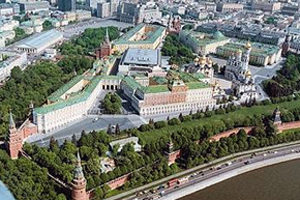RUSSIALINK: “Administrative Mobilization and the Dynamics of Electoral Manipulations on Putin’s Presidential Election” [Excerpt] – PONARS Eurasia /Kirill Rogov

[Full text: ponarseurasia.org/memo/administrative-mobilization-dynamics-electoral-manipulations-putins-presidential-election]
(PONARS Policy Memo) Vladimir Putin’s new presidential term is shaping up to be the most complicated of his political career. According to the Russian Constitution, he is not allowed to become president again in 2024. Finding a solution for this problem is a major issue for the Kremlin. Either there will be a transition of power or Putin will prolong his rule by making constitutional changes. The uncertainty and vulnerability of this situation is exacerbated by two negative factors: the continuing stagnation of the Russian economy and the country’s partial isolation in the international arena. These two circumstances help explain the outsized significance the Kremlin attached to the 2018 presidential elections, the results of which need to sustain Putin’s legitimacy until the 2024 milestone. In this perspective, it is important to scrutinize the election results and comprehend the particular mechanisms that enabled Putin’s electoral victory. The Kremlin could not rely on, as it had before, “political mobilization” techniques related to its international agenda. Instead, the leadership implemented an “administrative mobilization” formula in workplaces in order to achieve its targeted numbers of both turnout and votes ….
* * *
Conclusions
In sum, “abnormal voting,” interpreted as falsification using the Shpilkin method, provided over 8.5 million votes for Putin. Without these manipulations, the vote for Putin would have been about 70 percent with a 55 percent turnout. While these numbers would make for a convincing victory, it would be a repetition of similar victories-Putin in 2004 and Medvedev in 2008-but with lower turnout, which would have jumpstarted expert and societal discussions about the reasons voters were “de-mobilized.” It seems that the Kremlin felt the lower, actual numbers, would have been insufficient for the extra-legitimacy that Putin needs as he confronts the challenges ahead of international isolation, economic stagnation, and a transition of power.
The recent election demonstrates that there is a strengthening of authoritarian institutions taking place in Russia as Putin enters his fourth term. New techniques of manipulation were used in addition to some of the old ruses, but foreign policy actions were not used to get out the vote. The Kremlin coordinated with regional/local administrations and with the heads of major enterprises to organize systems of “compulsory voting” primarily via citizens’ employers. Thus, it resolved the unfeasibility of mobilizing on foreign policy issues by applying purely administrative mobilization procedures at the workplace.
Article also appeared at ponarseurasia.org/memo/administrative-mobilization-dynamics-electoral-manipulations-putins-presidential-election bearing the following notice:
PONARS Eurasia © 2018 All rights reserved
with the text “Permissions & Citation Guidelines” linking to ponarseurasia.org/permissions-citation-guidelines, which, in turns, bears the notice:
Permission:
Content by PONARS Eurasia may be re-distributed for Fair Use (non-commercial) purposes with credit provided to PONARS Eurasia and the author(s) and with a hyperlink/URL pointing to the original content page on this website.
